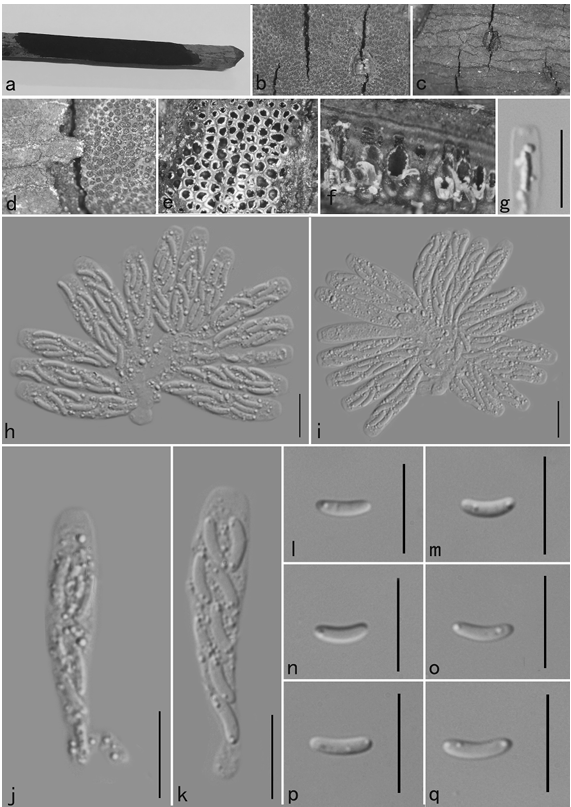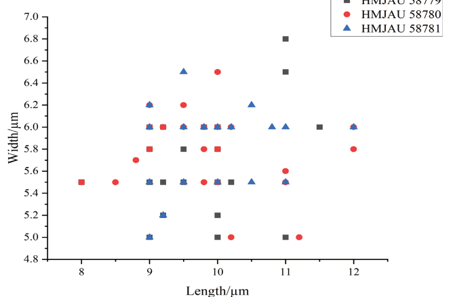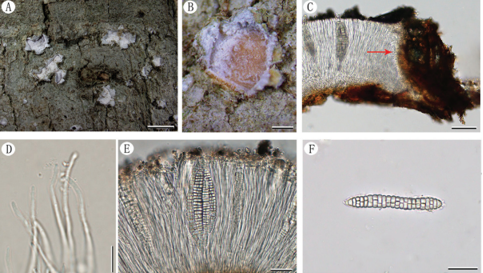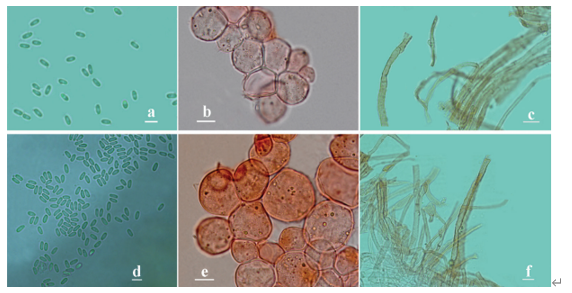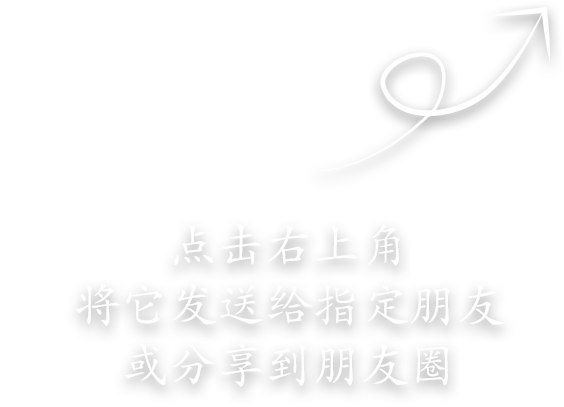Clitopilus yunnanensis S.P. Jian & Zhu L. Yang, sp. nov. 2020
MycoBank MB831310
Holotype: CHINA. YUNNAN PROVINCE: Deqin County, Baima Snow Mountain, singled on soil in Quercus semecarpifolia Smith forest , alt. 3344 m, 18Aug 2018, S.P. Jian 223 (holotype KUNHKAS104518).
Morphological description
Basidiomata paxilloid to clitocyboid, medium-sized. Pileus 30–50 mm wide, plano-convex to convex, often slightly depressed at center; surface grayish brown (1C1–2) to yellowish brown (1C3–5), paler with age, viscid when wet, slightly squamulose at first, soon smooth; margin incurved, then slightly expanded over time; context 4–8 mm thick, white (2A1). Lamellae decurrent, whitish (1A1–B1), then pinkish (4A4–5), crowded, up to 5 mm in height, edges entire and concolorous, lamellulae numerous. Stipe 20–55 × 4–14 mm, central and equal, subcylindrical to cylindrical; surface whitish gray (4B1) to grayish yellow (4B2–3); basal part usually with white (1A1) mycelium when young, but reduced over time. Odor strongly farinaceous.
Basidiospores (6–)7–11(–12) × 5–8 μm, Lm × Wm = 8.88 (± 0.88) × 6.17 (± 0.54) μm, Q = (0.93–)1.00–1.85 (–1.87) (Qavg = 1.45 ± 0.19) [91/4/4], hyaline, slightly thick-walled (<0.5 μm), subovoid to subfusiform or fusiform, sometimes amygdaliform to limoniform in profile and face view, strongly angled in polar view with 5–7(8) obvious longitudinal ridges. Basidia 17–37 × 7–13 μm, clavate, hyaline, 4-spored, rarely 2-spored; sterigmata 3–4 μm long. Lamellar trama regular, composed of 3–12 μm wide, hyaline hyphae; oleiferous hyphae rare; subhymenium consisting of filamentous hyphal segments. Lamellae edges fertile. Pleurocystidia and cheilocystidia absent. Pileipellis an ixocutis composed of slightly interwoven, incompactly arranged, somewhat gelatinized, hyaline, smooth, filamentous hyphae, 3–7 μm wide, sometimes inserted hyphae with yellowish to yellow smooth or incrusted intracellular pigment; the subpellis made up of compactly arranged, yellow, smooth or incrusted, intracellular- or parietalpigmented, filamentous hyphae, 3–10 μm wide; pileal trama composed of hyaline, filamentous, oblong, inflated hyphae, 5–18 μm wide. Stipitipellis a cutis composed of compactly arranged, slightly gelatinized, thinwalled, hyaline hyphae, 3–8 μm wide. Caulocystidia absent. Clamp connections absent.
Habitat: on soil in Quercus semecarpifolia Smith forest.
Distribution: outhwest China.
GenBank Accession: ITS MN061308; 28S MN065698; rpb2 MN148136; tef1 MN166247; atp6 MN133752
Notes: In sect. Clitopilus, C. yunnanensis is similar to C. rugosicepsbut but differs from this species by the often paxilloid to clitocyboid basidiomata and strongly gelatinized pileipellis with the pigment restricted in the subpellis.
Reference: Si-Peng Jian, Tolgor Bau, Xue-Tai Zhu et al. (2020): Clitopilus,Clitocella, and Clitopilopsis in China.
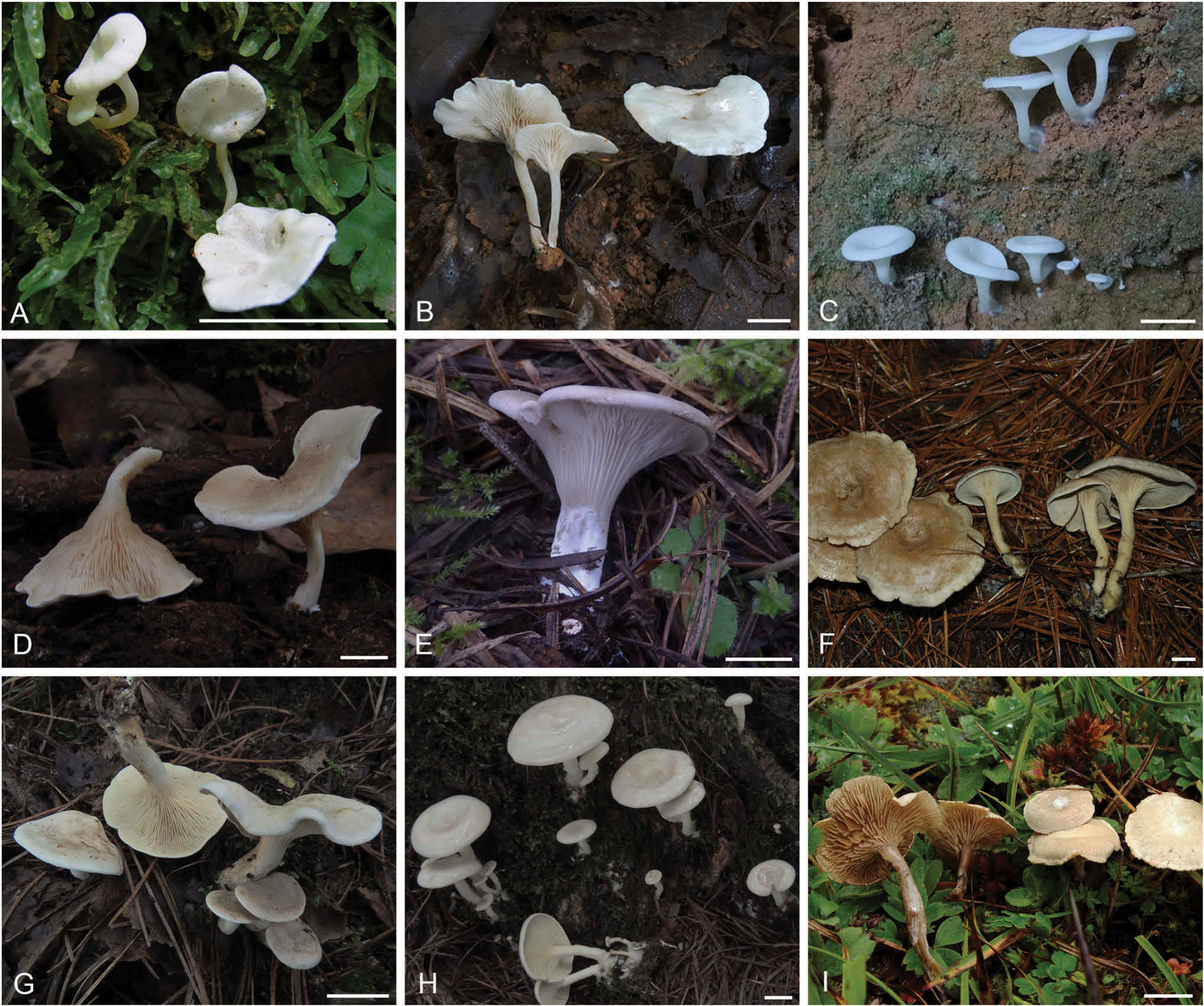
Basidiomata of Clitopilus, Clitocella, and Clitopilopsis. A–C. Clitopilus umbilicatus (A. KUN-HKAS80370. B. KUN-HKAS104509.C. KUN-HKAS80310, holotype). D–E. Clitopilus yunnanensis (D. KUN-HKAS59712. E. KUN-HKAS82076). F. Clitocella mundula (HMJAU7275). G–H. Clitocella orientalis (G. KUN-HKAS78876. H. KUN-HKAS78763, holotype). I. Clitopilopsis albida (KUN-HKAS10451 holotype). Bars = 10 mm


